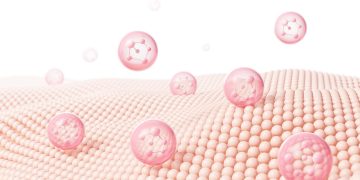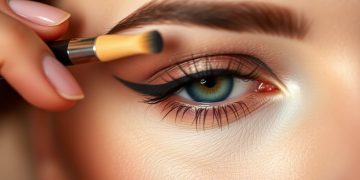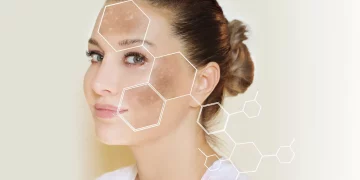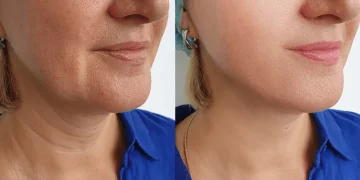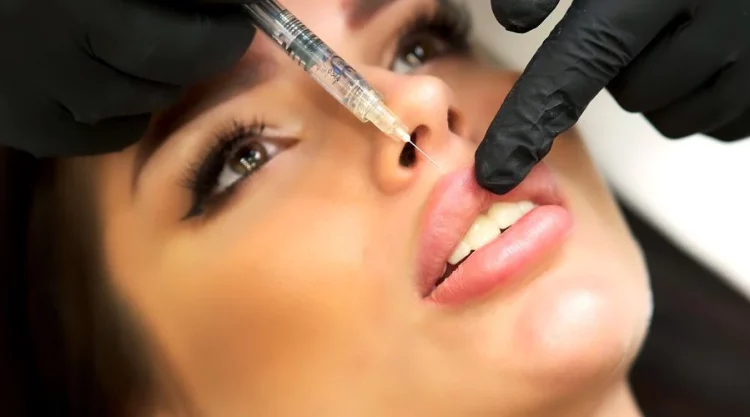Hyaluronic acid (HA) fillers have become one of the most popular non-surgical treatments for facial contouring and rejuvenation. These injectable gels, which contain hyaluronic acid, are used to restore volume, enhance facial features, and reduce the appearance of wrinkles. But can hyaluronic acid fillers truly improve facial contours, and are there any potential side effects to be aware of?
In this article, we’ll explore the benefits of hyaluronic acid fillers for facial contouring, how they work, the results you can expect, and the potential risks and side effects.
What Are Hyaluronic Acid Fillers?
Hyaluronic acid fillers are a type of dermal filler made from a substance that naturally occurs in the skin. Hyaluronic acid is responsible for maintaining skin hydration, volume, and elasticity, but as we age, its natural levels decline, leading to sagging, wrinkles, and a loss of volume in the face.
Hyaluronic acid fillers are designed to mimic the effects of naturally occurring hyaluronic acid in the skin. They are injected into the skin to restore volume, smooth wrinkles, and enhance facial contours. The treatment is minimally invasive, providing natural-looking results with little downtime.
How Can Hyaluronic Acid Fillers Improve Facial Contours?
1. Restoring Lost Volume
As we age, the skin loses volume due to decreased collagen and elastin production, as well as the reduction of hyaluronic acid. This loss of volume can cause certain areas of the face to appear sunken, such as the cheeks, under-eye area, and temples.
Hyaluronic acid fillers are commonly used to restore this lost volume, resulting in a more youthful and refreshed appearance. By adding volume to these areas, fillers can improve the overall contour of the face, lifting the cheeks and rejuvenating hollowed areas.
2. Enhancing Cheekbones
Full, high cheekbones are often considered a desirable feature, but not everyone is naturally blessed with prominent cheekbones. HA fillers can be used to enhance the cheekbones by adding volume to the upper cheeks. This helps to create a more balanced and sculpted face without the need for invasive surgery.
3. Defining the Jawline
A well-defined jawline is another facial feature that can benefit from hyaluronic acid fillers. The filler is injected along the jawline to provide subtle contouring, creating a more defined, youthful, and angular appearance. This technique is especially beneficial for individuals with a softer or less pronounced jawline.
4. Shaping the Chin
Hyaluronic acid fillers can also be used to enhance the chin, creating a more symmetrical and balanced facial profile. For people with a receding or under-projected chin, HA fillers can add volume to create a more proportionate appearance.
5. Smoothing Nasolabial Folds and Marionette Lines
Hyaluronic acid fillers can be used to smooth deep lines and folds around the nose and mouth, such as nasolabial folds (the lines running from the sides of the nose to the corners of the mouth) and marionette lines (the lines extending from the corners of the mouth down to the chin). By filling in these areas, fillers help to soften facial lines and improve facial contours.
What Results Can You Expect From Hyaluronic Acid Fillers?
The results of hyaluronic acid fillers are typically immediate, with noticeable improvements in facial volume and contour right after the injection. However, the full effects may take a few days to fully settle as any swelling or redness subsides. The treatment is non-surgical and provides natural-looking results that last anywhere from 6 months to 2 years, depending on the type of filler used, the area treated, and individual factors.
Advantages of Hyaluronic Acid Fillers for Facial Contouring:
- Minimal Downtime: Hyaluronic acid fillers involve little to no downtime, with most people returning to their normal activities right after the treatment.
- Natural Results: When injected by a skilled professional, HA fillers provide subtle and natural-looking contour improvements without the “overdone” appearance sometimes associated with other cosmetic procedures.
- Customizable Treatment: HA fillers come in different formulations, allowing for tailored treatments that target specific areas of the face.
- Reversible: Unlike permanent fillers, hyaluronic acid fillers can be dissolved with an enzyme called hyaluronidase if the results are not as expected.

What Are the Potential Side Effects and Risks?
Although hyaluronic acid fillers are generally considered safe, there are some risks and side effects associated with the treatment. It’s essential to be aware of these potential risks before undergoing treatment.
1. Common Side Effects
These are typically mild and temporary:
- Swelling and redness at the injection sites.
- Bruising in the treated area, which usually resolves within a few days.
- Tenderness or discomfort around the injection site, which can last for a few hours to a day.
- Itching at the injection sites, which generally fades within a day or two.
These common side effects usually subside within a few days and are considered a normal part of the healing process.
2. Rare and Serious Side Effects
Although rare, some serious side effects can occur, including:
- Infection: Any injectable treatment carries a risk of infection, though this is uncommon when proper hygiene protocols are followed.
- Nodules or lumps: Occasionally, filler can clump under the skin, resulting in small lumps or nodules that may need to be massaged out or dissolved by a healthcare professional.
- Vascular occlusion: This is a rare but serious complication that can occur if the filler is accidentally injected into or around a blood vessel. This can block blood flow to the skin, leading to tissue damage or necrosis. Immediate treatment is necessary if this occurs.
- Allergic reactions: Although rare, some individuals may experience an allergic reaction to the filler. Symptoms can include swelling, redness, or irritation.
- Asymmetry: If the filler is not injected evenly, it may cause temporary asymmetry, which can often be corrected with additional treatment.
3. Long-Term Risks
While hyaluronic acid fillers are considered safe, long-term side effects may include:
- Skin changes: In rare cases, excessive or repeated use of fillers in one area could cause changes in skin texture or the formation of scars.
- Dissipation of filler: Over time, hyaluronic acid is naturally absorbed by the body, and the effects of the filler wear off. This is a normal process, but for those who want prolonged results, maintenance treatments are required.
How to Minimize Risks and Ensure Optimal Results
To minimize risks and ensure optimal results, it is important to take the following precautions:
- Choose a Qualified Practitioner: Always ensure that your filler injections are administered by a licensed, experienced injector who specializes in facial aesthetics, such as a dermatologist, plastic surgeon, or licensed esthetician.
- Avoid Blood Thinners: To minimize the risk of bruising, avoid taking aspirin, anti-inflammatory medications, or alcohol at least 24 hours before the procedure.
- Follow Aftercare Instructions: After treatment, avoid vigorous exercise, excessive sun exposure, or massaging the treated areas for a few days to allow the filler to settle properly.
- Be Patient: Results may take a few days to fully manifest as swelling and redness subside. Be patient and allow the filler to settle into place.
Conclusion
Hyaluronic acid fillers are a highly effective way to improve facial contours and restore volume in a non-invasive manner. Whether you’re looking to enhance cheekbones, define your jawline, or reduce the appearance of wrinkles, HA fillers can provide natural-looking and lasting results. While the procedure is generally safe and requires minimal downtime, it’s essential to be aware of potential side effects, such as swelling, bruising, or rare complications.
By working with a qualified professional, you can achieve the best possible results and minimize any risks, ensuring that your facial contouring treatment enhances your natural beauty safely and effectively.





